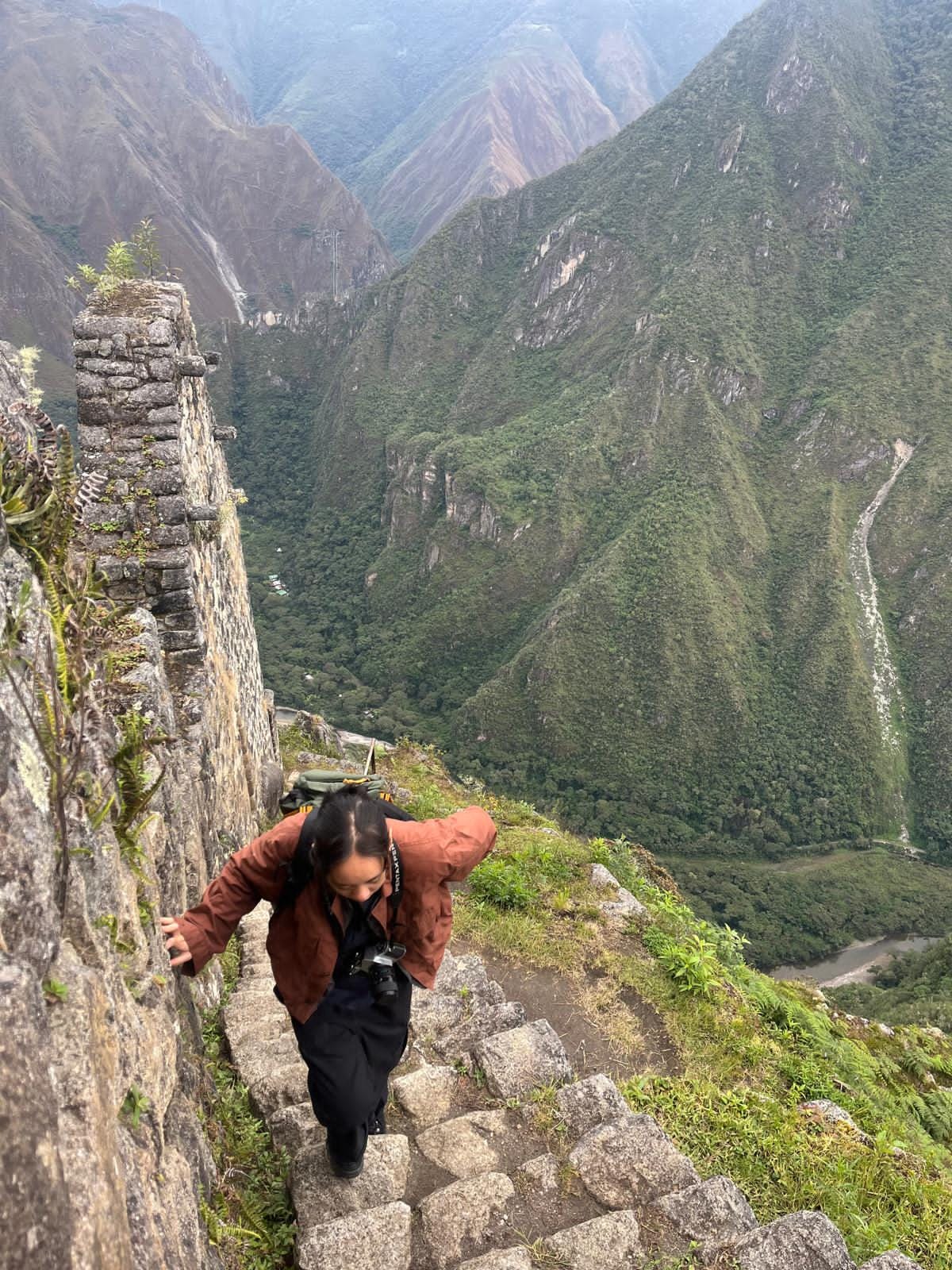When Machu Pichu was ‘discovered’ by Yale Universities expeditionist Hiram Bingham in 1911, there were Andean families living in the roofed storage structures. Longtime local residents around the ruin were also familiar with the site, possibly in many ways contemporarily unbeknown to the 4,400 visitors flooding the grounds daily, to…
while, what exactly each group or group of individuals is arriving for feels
undefinable by me alone. I can’t give a straight answer personal to myself.
Mark Rice’s book Making Machu Pichu: The Politics of Tourism in 21st Century Peru (2018) provides context of this famous ruin as a concrete modernising mission, a site that restored Costal and Andean political ties mending a sense of nationalism, and, as well, a fleet aiding and establishing Indigenous identity. The market forces and design for consumer appeal is starkly evident in Aguas Calientes, a first place we’ve been (beside Lima, the historical centre of coastal (Spanish) elites) that is lacking the iconic construction of Inca Rocks. Beside the channeled, rushing Urubamba river, I hear and see further construction with steel, cement, or brick built around natural stones protruding from the group of this steep valley; and it is evident that even the oldest built environment is relatively new to this natural environment. The relative timeline is imagined since construction began around 1450 A.D. during the rule of Pachacuti, depopulated in 1550s due to Spanish born disease, then centuries of abandonment. The activities taking place in the 20th century were then adhering to new imperatives, decided upon by transnational forces promoting Couscous regional identity as wondrous and reachable.
Although there is evidence of travels and foreign cartographers who visited and mapped Machu Pichu before Bingham’s stumbling upon in 1911, the prestige he carried inaugurated Cusco as an archeological region, opening up new economic opportunities in ‘cultural work’. This is discussed through quite a few form of employment and folkloric reclamation.
Firstly, construction and service of lodgings built for tourists, professionals at a new municipal hospital, and an a local team organising and running the archaeological institute provided work in Aguas Calientes. Notably, the massive project of restoration of Machu Pichu itself brought consistent physical labour to Cusqueños who claimed the ancient trail to the peaks. In Rice’s book, he speaks of an era in consensus of the power of Tourism, referencing an article in the News Paper about the project, “is truly a fortune in our hands, a beautiful and emergent good for which tourists pay and our country should be interested in selling” ((SDJFLKSDJGJ))
Publicity, bring an awareness of Machu Pichu to people wealthy in capital and leisure time, was another facet of opportunity to Cusqeños and transnational allies. The nature of this can be summed up by the Comité Central de Propaganda Tourístico, tasked with reporting on ways to convert Cusco into a global tourism attraction. In sponsored relationship with Kodak, presentation was an “engine for modernising” that con-currently crafted a narrative that would meet the needs of modern travellers and cultural practitioners. I said con-current in the sense that tourism leant a tool for Cusqueños to define themselves and a visions of their regional culture, in the most simplified narrative “recasting a national identity” (p.16) coinciding with the great Incan civilisation. For example, urban folklore groups “use the cultural movement to assert their belongings in modern Peru” (p.42).
Machu Picchu is confusing to me, to this viewing of “staged authenticity” that adjust angles of perception to meet tourists expectations of imagined pasts. Although the inception of the Cultural Office provided a platform for Indigenous populations to celebrate and exhibit the “True” Peru, the commercialisation of such is described by Jean Comaroff as “Ethnicity, Inc.”
I was intrigued to read of how the 1969 agrarian reform and revolt lead by campesinos ties to this place able to provide economies capable of absorbing the impacts of repression. But ultimately, the question of how commercialised archeological projects are and are not tied to social and cultural realities is still very alive. I feel that contemporary exploitation of Indigenous populations contradicts the outward and consumptive appeal of a form of tourism, a way of modernisation for the outsiders.
When I think about how business and scholarship go hand in hand, held by in the palms of “Anglo-Saxon superiority,” I question my capabilities of experiencing beyond constructed narratives. The energy of Machu Pichu was reminiscent of ancestors in intellectual and espiritual contact. Walls of white granite (60% quarts) absorb energy from the sun and cardinally orientate to measure the passing of daily and seasonal time.
I walk in reverence up the stairs to the top of Huayna Pichu, starts placed and impressions by bodies who’s energy lives past ones life.
Soft are the young jungle ferns burrowed between stones.
Vestige Inca virgins, how did you take care of this place while in sanctuary she cared for you?
Black and white butterfly, orange headed sparrow, may your memory of what this place is be translated to my language?
Apus range, infinite.








I appreciate you including those photos in your blog post. The contrast between the modern architecture - which I prefer to call postmodern - of Aguas Calientes with the ruins of Machu Picchu. Your images help you argue and think about those spaces in a different way. One is a variegated and closed space, and the other is open. One always transforming due to market demands, the other resisting change in a paradoxical way. And yet the two are inseparable.